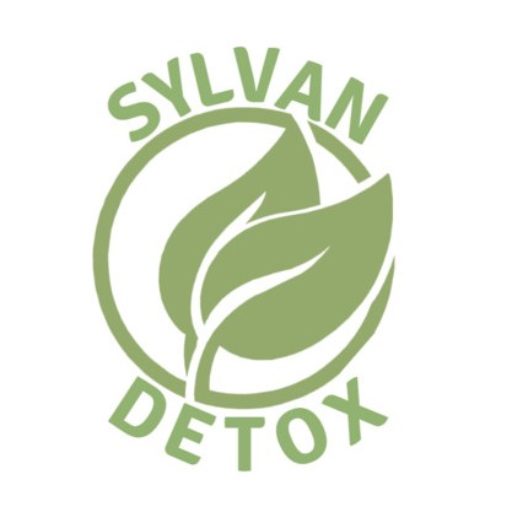If you’ve been using opioid painkillers you may be feeling apprehensive about the prospect of getting off opioids, especially if you’ve had to manage pain over longer periods. And that worry isn’t misplaced, withdrawal from using opioids in any form can cause extremely uncomfortable symptoms. Fortunately, Sylvan Detox is here to help! Keep reading to find out how our first-rate facilities and staff will keep you safe and comfortable through the process.
If you or a loved one is suffering from any form of addiction or abuse, please call Sylvan Detox at (818) 308-3099.
Opioids: An Ongoing Addiction Crisis
Humanity has a long relationship with opioids, we’ve been using them in some form or another to treat pain for over 6,000 years. Mentions of opium and images of the opium poppy have been discovered from many different time periods in antiquity, the oldest dating back to 2100BC. Opioids make excellent painkillers due to the way they interact with our brains and bodies, but this also makes them highly addictive. If you’ve been taking painkillers for more than two weeks you may need to undergo a medical detox process.
Opioid painkillers are often prescribed to treat severe pain from an illness, or injury. They’re also prescribed to treat post-surgery pain, which can be severe. Painkiller addiction can happen to anyone, at any time in their life. Nobody is immune to the risk of opioid addiction, it affects millions of Americans every year. Over the past few decades, there has been a dramatic increase in the prescribing of opioid painkillers for chronic, non-cancer-related pain, despite the serious risk of addiction and the lack of evidence on their long-term effectiveness. In addition to the high risk of abuse, overdose, and death there’s also a host of unpleasant side effects associated with opioid use including
- Increased tolerance, you need more and more for the drug to work
- Physical dependency, you will go into withdrawal without the drug
- Confusion
- Depression
- Constipation
- Lowered levels of testosterone, which affects energy and sex drive
- Itching and sweating
- Nausea and vomiting
Statistics of Opioid Use
The over-prescription of opioids is also tearing families apart. Overdose deaths have skyrocketed in the last 20 years, with nearly 5 times as many deaths from prescription opioid overdose in 2020 compared to 1999. Almost 24% of overdose deaths in 2020 were from prescription painkillers. Prescription opioid overdose has killed over 264,000 Americans in that same timeframe. That’s a quarter of a million sons, daughters, siblings, mothers, fathers, and friends gone, leaving a ragged hole in the fabric of their families.
And that’s just deaths from prescription overdose, without even counting illicit drugs like heroin. Many people who become addicted to their prescription painkillers turn to street drugs when unable to acquire painkillers, that’s how strong the physical and psychological addiction to opioids becomes. You’re no longer in control of your drug use, instead, you’re controlled by it, and you never even saw it coming. Every day 250 people die in America from a drug overdose. With powerful synthetic opioids like Fentanyl being easy to smuggle into the country using illicit drugs of any kind becomes a game of Russian roulette. Illicit Fentanyl has been found in every type of street drug available, and it’s killing indiscriminately.
Most Commonly Used Opioids
The most commonly prescribed opioids for pain management are
- Hydrocodone (Vicodin)
- Oxycodone (Percocet, Oxycontin)
- Oxymorphone (Opana)
- Morphine (Kadian, Avinza)
- Codeine
- Fentanyl
- Hydromorphone
- Tapentadol
- Methadone
When Opioids Usage Becomes Abuse or Addiction
If you’ve been involved in an accident or sustained a serious injury your doctor may legitimately prescribe you opioids to deal with severe pain. Addiction happens when you become unable to stop taking those painkillers, even after the need to has passed. Addiction, or substance use disorder, is characterized by irresistible cravings for the drug, compulsive and out-of-control use of the drug, and continued use of the drug despite harmful consequences. Simply put the part of your brain that controls positive motivation drives you to seek out and use opioids, and your central nervous system, which has become used to functioning with opioids present, sends unpleasant messages when the drug is not in your system. Someone who is dealing with an opioid addiction may display the following signs
- Mood swings and unexplainable hostility
- Changes in sleep patterns
- Missing school or work or performance problems
- Stealing prescription drugs from family members
- Forging prescriptions from multiple doctors for painkillers
- “Losing” prescriptions so new ones must be written
- Memory problems
- Changes in physical appearance such as rapid weight loss
- Neglected personal hygiene
- Money problems such as stealing or increased need for funds
- Loss of interest in activities and hobbies
- Slurred speech
- Risk-taking or criminal behavior while on opioids, or acquiring them
4 Steps to Get Off Opioids
If you or someone you love can’t stop using prescription painkillers there is hope, opioid addiction can be overcome with treatment and therapy.
- Admit to yourself that your use of opioid painkillers is beyond your control. It’s tough to go through treatment honestly if you can’t admit there is a problem in the first place, and if you can’t stop taking painkillers it’s a problem, period.
- Admit to others that you cannot control your use of opioids. Allow the people who know and love you to understand what’s going on with you, and to support you through the recovery process. Community support is a huge factor in staying in recovery, and you’ll want to grab every bit of support you can on the way there.
- Ask for help! Nobody, absolutely no one, can overcome a substance use disorder on their own. Addiction is a disease, not a flaw in your character or a moral failing, there is no shame in reaching out for help.
- Foster an internal sense of hope for recovery. Hope is what drives us, and there is hope for you, hope for change, and a new way of living. Millions of Americans have completed treatment for opioid addiction successfully, and remain in recovery. You are not alone, and you have the strength to overcome this.

Sylvan Detox: A Place to Get Better and Get Off Opioids
Now that you’ve made the incredibly courageous decision to ask for help with opioid painkiller use the next step is to pick up the phone and call our admission specialists. Our specialists are standing by 24/7 to answer your questions about the process of detox and rehabilitation. As mentioned above if you’ve been using opioids for more than two weeks you may require a medical detox, our medical staff at Sylvan Detox is experienced in the process of detox and knows how to keep you safe, with a minimum of discomfort. Our facility is inviting and beautifully furnished, you’ll never feel like you’re in a ward at the hospital, even though our standard of care is equal if not higher due to our staff-to-patient ratio and 24/7 emotional and medical support.
We’re a small, 6 bed facility located in the heart of the San Fernando Valley and are pleased to offer an environment that feels like home. Tour our facility online and make note of our amenities which include high-end mattresses, plush bedding, and a private chef experienced in recovery nutrition. While you’re completing a medical detox from opioids enjoy our pool table, ping-pong table, game consoles, lounge areas, board games, and fitness classes. Our staff truly cares about you, your family, and your road to recovery. Allow us the privilege of helping you recover from opioid use, call us today and verify your insurance. You are not alone!

